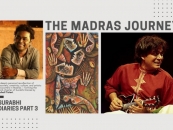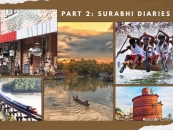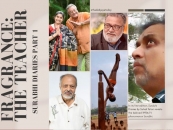
True Review: Television
by Piroj Wadia November 20 2013, 6:08 pm Estimated Reading Time: 2 mins, 58 secsLast week, especially the weekend, belonged to Sachin Tendulkar, who played his last test match at the Wankhede Stadium in Mumbai. Branded the SRT 200, as it was also his 200th match.
The Star Sports bouquet of channels telecast the matches live, left no footage to imagination, as they shot the Tendulkar family arriving at the Wankhede Stadium and heading to their seats. This red carpet or should it be green carpet treatment gave millions of viewers across India and elsewhere who were watching it Live a sense of who?s who and who?s there. The viewer sitting at home stole a clear march over the throngs at the stadium who weren?t treated to the off-field happenings.
Cameras zoomed in on Sachin?s family, a rare view of his mother who was watching Sachin play for the first time Live. His coach Ramakant Achrekar. When the man-of-the-hour played, the camera gave unmissable glimpses of Anjali Tendulkar?s reactions. The most touching shots were when Sachin walked onto the field to bat, the West Indies formed a guard of honor.
If it hadn?t been for television, would we have ever ?witnessed? these proceedings Live. Never. Not just cricket, but so much of world events could now be referred to as Before TV and After TV.
Before TV, the cricket aficionado followed cricket matches by listening to the radio commentary. Men like AFS Taleyarkhan, Vijay Merchant, Suresh Saraiya, etc. were legendary voices. Matches in Bombay were then played at the Brabourne Stadium and AFS Taleyarkhan would describe the bowler ?running up from the Churchgate end as the 1.30pm Virar slow leaves Churchgate?? It was left to these gentlemen to paint the picture in our minds eye of the proceedings at Chepauk, Eden Gardens, Ferozsha Kotla or Brabourne.
The very first telecast of a test match was in January 1975 when the West Indies played India at the spanking new Wankhede Stadium. Doordarshan worked with one or two cameras. Clearly the cameraman had many an obstacle to clear. The visitors lofted their shots over the boundary and the camera panned the batsmen taking runs; following the ball in its trajectory was unthinkable. The commentators were also awkward and would describe the play as: The ball has left the bowler?s hand and the batsman has struck it?. That match we watched with TV muted & radio switched on!
When the Reliance World Cup was hosted by India and Pakistan in 1987, TV crews and coverage were cricket literate, with the help of overseas cameramen and equipment, the game was enhanced with replays, slow motion plays, etc. In 1996, when the championship was back in the subcontinent, television sports coverage was distinctly improved. Stump view cameras, pitch mikes, etc. not just enhanced the game of cricket being telecast, but brought home the stadium feel. They even had a spunky mascot ? a tiger ? slunk when a batsman was out for a duck, or a bowler uprooted a stump?.Who can forget the edge-of-the seat excitement as tail enders Anil Kumble and Javagal Srinath put on 52 runs for a 9th wicket partnership in Bangalore in n ODI against Australia in 1996. The 2011 World Cup win was the first time Indians across the country saw the World Cup lifted by the home team live.
Last week, another chapter in India?s cricketing history was chronicled across news channels in every language with Specials on Sachin Tendulkar or SRT200 as the buzzword was last week. Thank god, we have television, had it when Sachin Tendulkar made his debut and when he hung up his gloves.






-173X130.jpg)
-173X130.jpg)




-173X130.jpg)